Bundle your HTML
In this tutorial we will show:
- how to define a HTML model,
- how to create a HTML component,
- how to use it in your application and
- how to install it in another application.
There are many ways to bundle HTML files
This is one example on how to bundle and install html templates with System Designer. But it is not the only way. Find the one that matches your needs.
Define the HTML model
First create a schema that:
- has for name HTML
- has a source property and
- a render method.
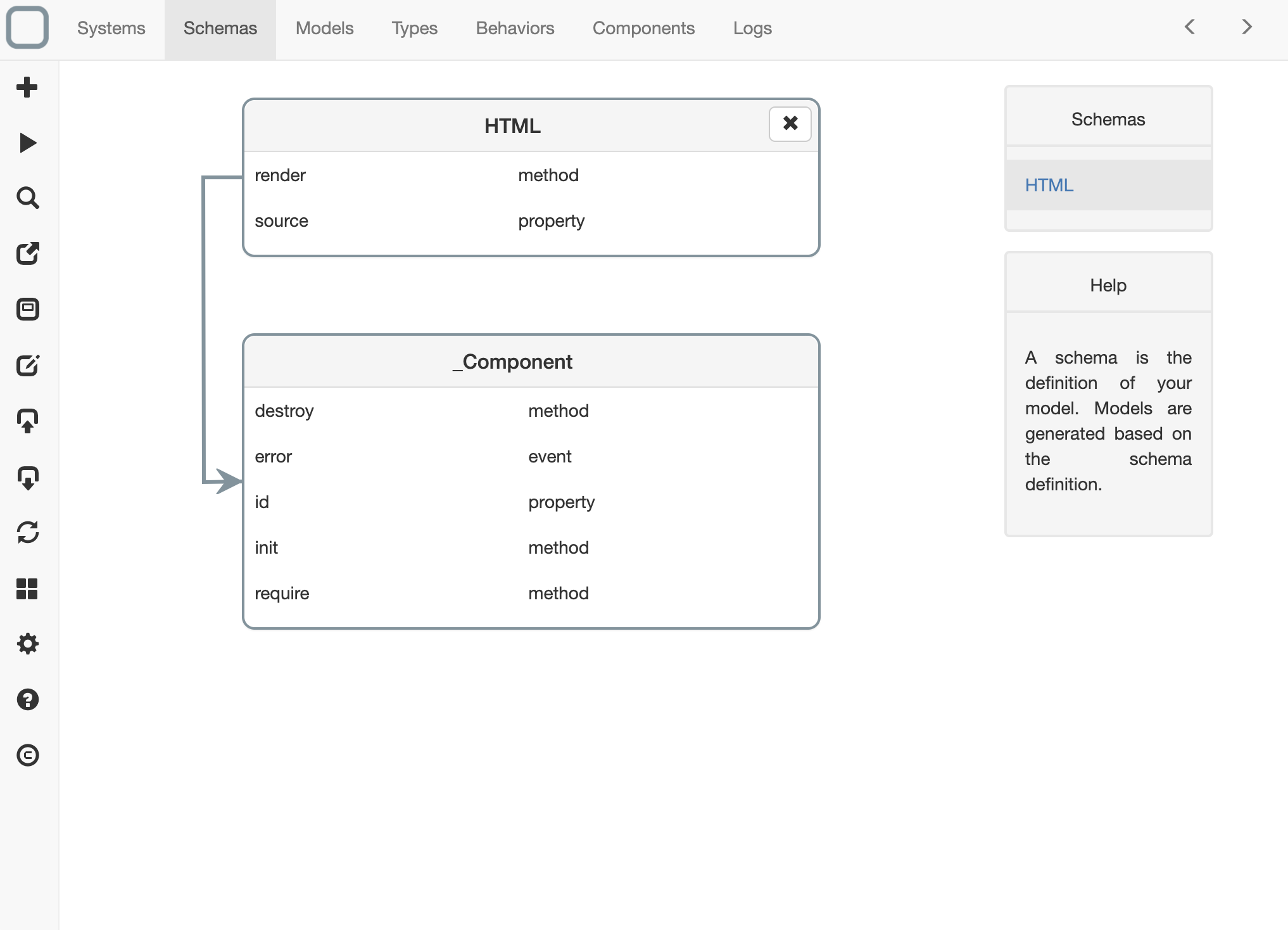
Then edit the model:
- change the type of source in from any to html and
- change the type of the fist parameter from any to string.
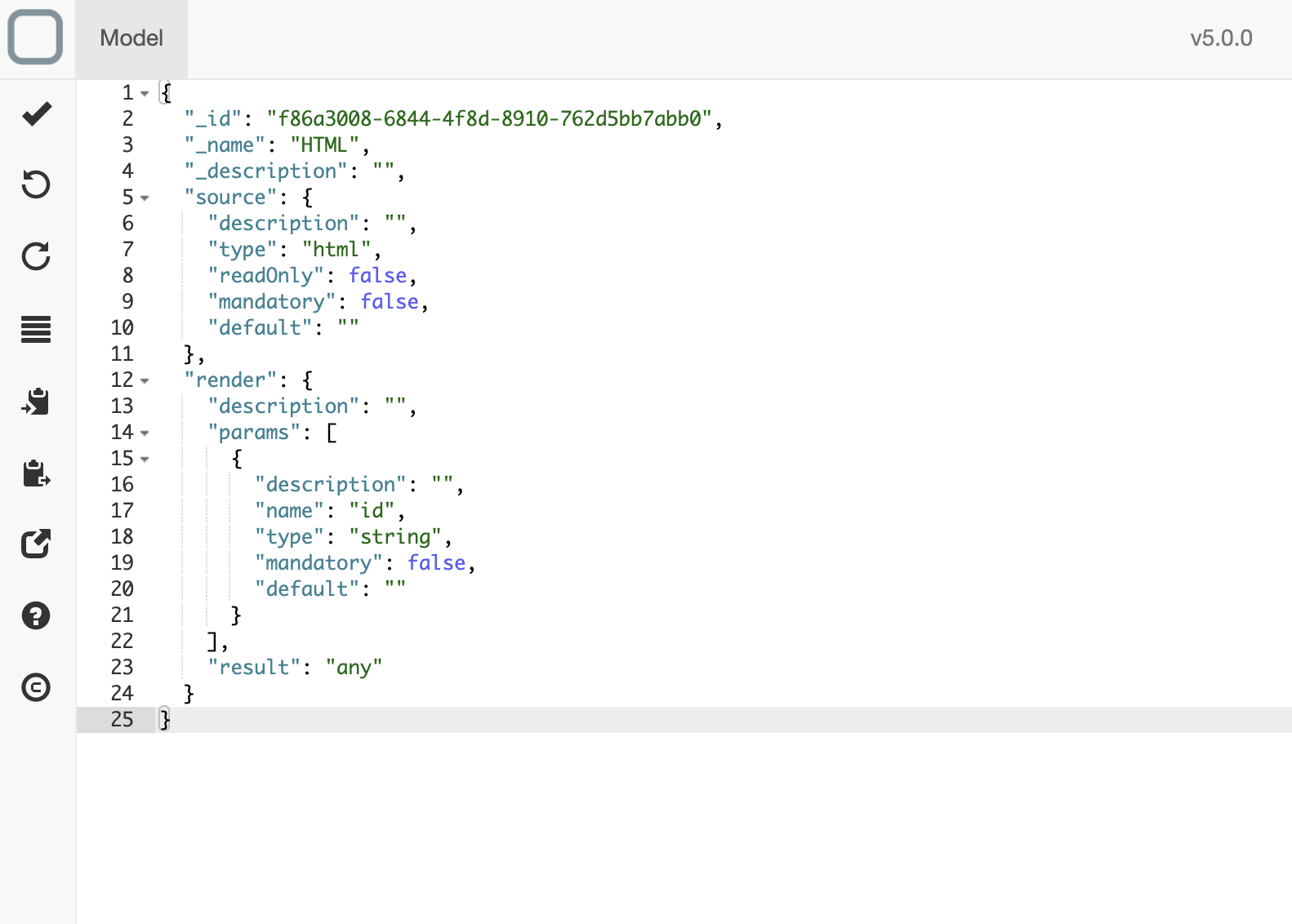
Code the behavior of render method
Edit the render method of the model as follow:
function render(id) {
let dom = null;
if (id === 'body') {
dom = document.body;
} else {
dom = document.getElementById(id);
}
dom.innerHTML = this.source();
}

Create a HTML component
Now create a HTML component from the interface.
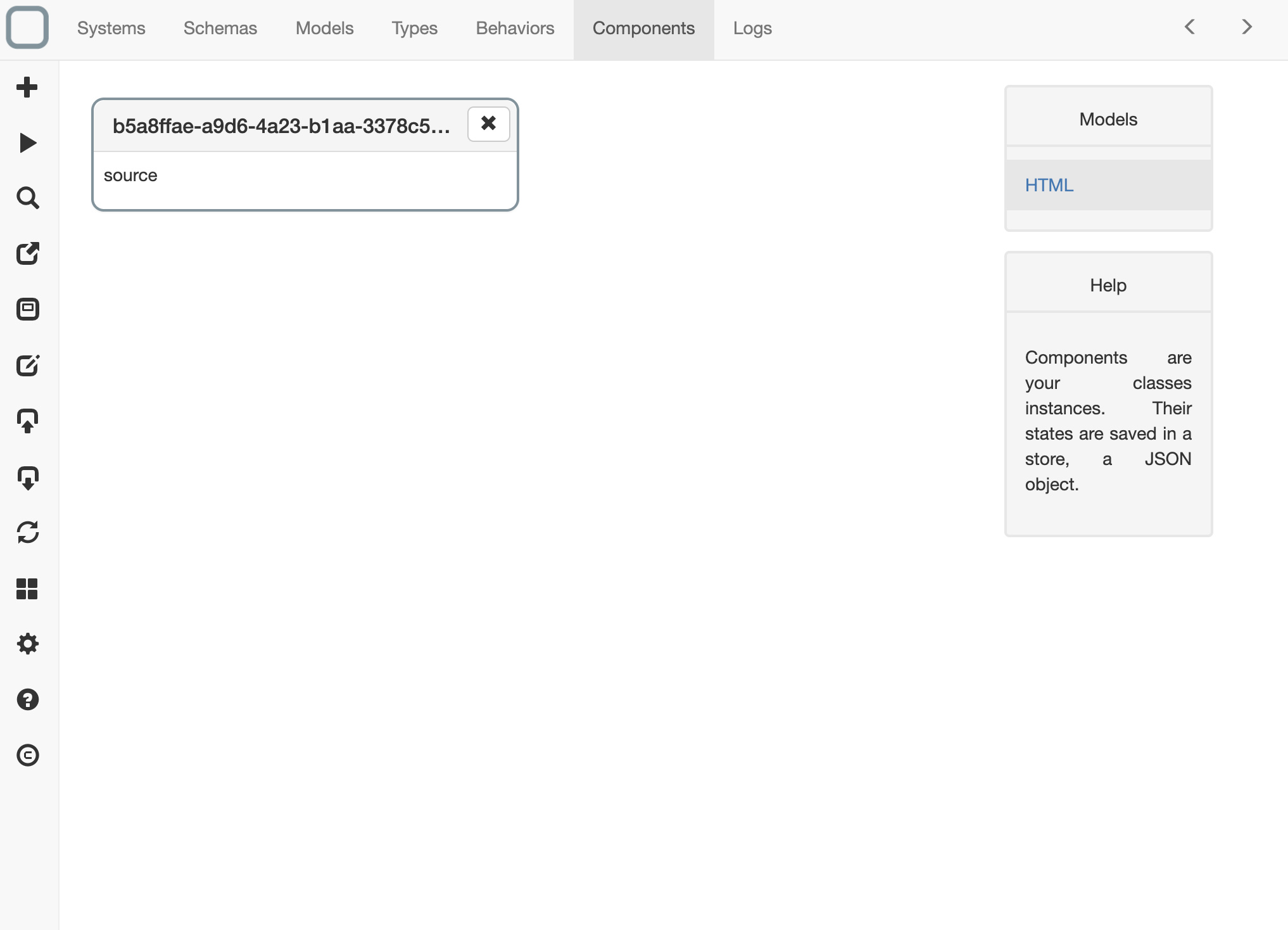
Then edit the component. You will notice that a source tab appears. It will allow you to add your html in your component. Put the HTML you want. In this example we set:
<input type="text" name="input" placeholder="Enter some text here">
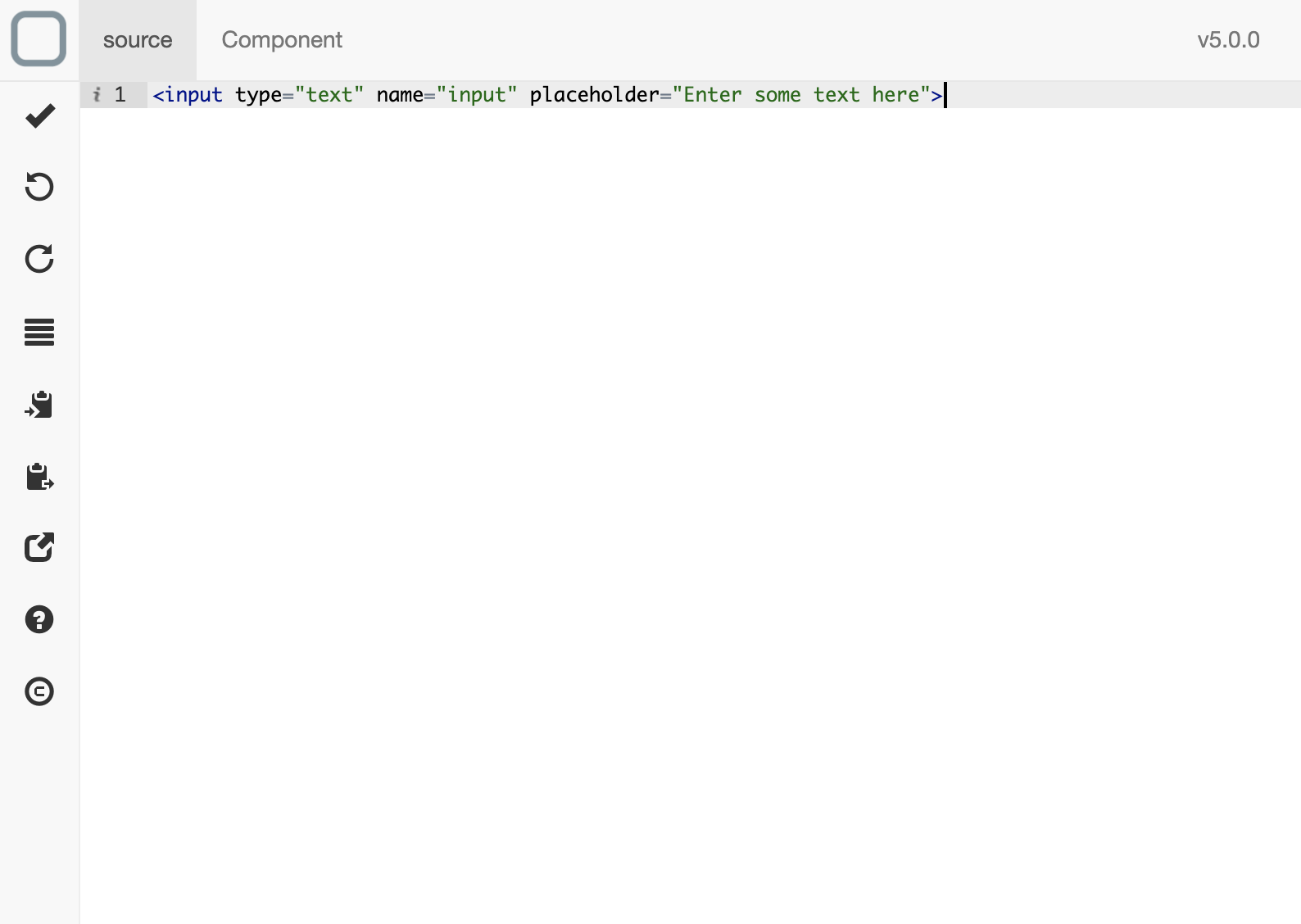
What happens?
Because in the model you tell that source property has for type html. System Designer let you edit this property as HTML. It means that System Designer will check that the html you write is correct.
Then click on the Component tab to edit the _id property value of the component:
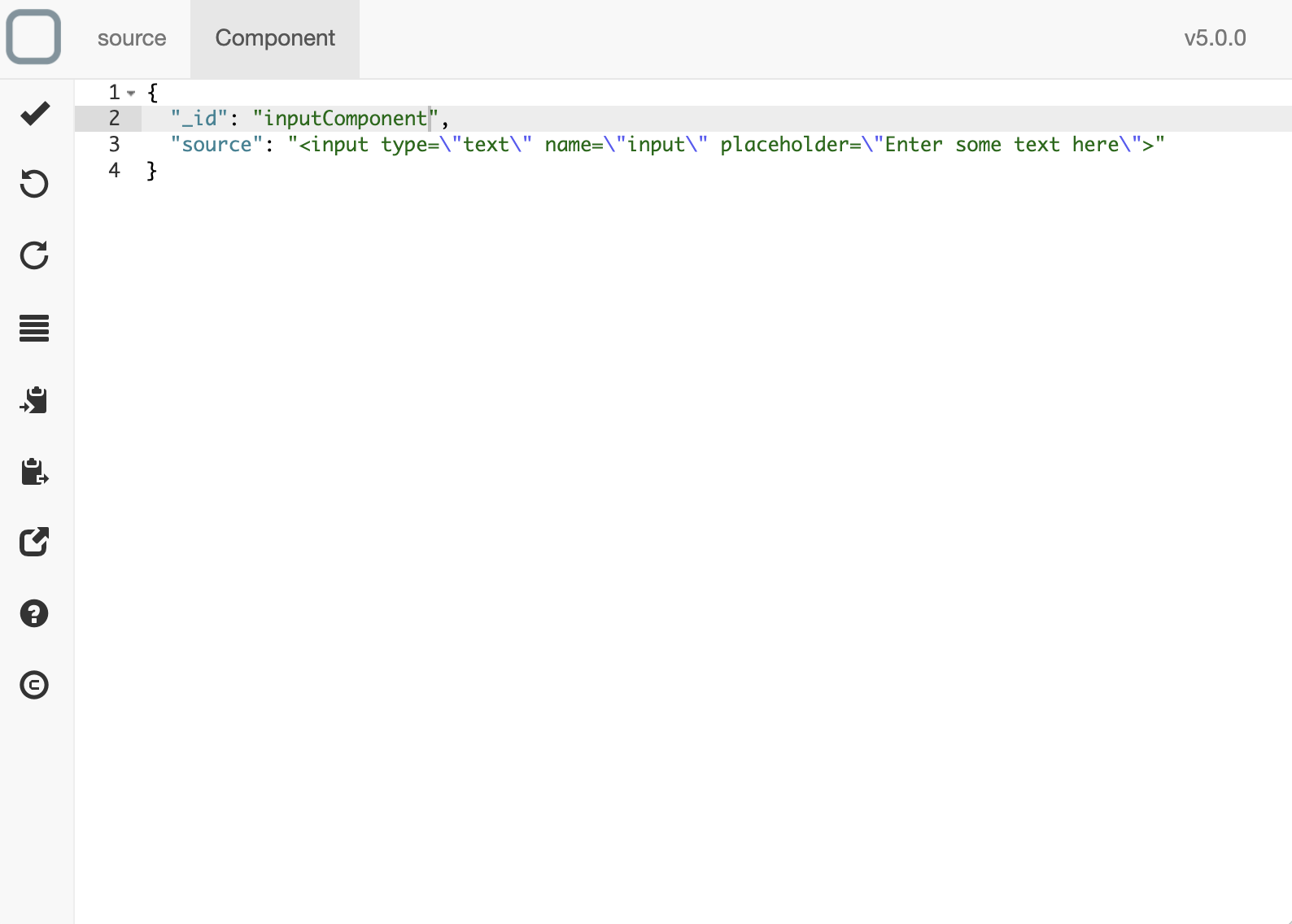
Render your component in your application
Edit the start method of your system and:
- require the HTML component and
- call the render method.
function start() {
this.require('inputComponent').render('body');
}

Run your bundle
Now you can run your system and see the result.
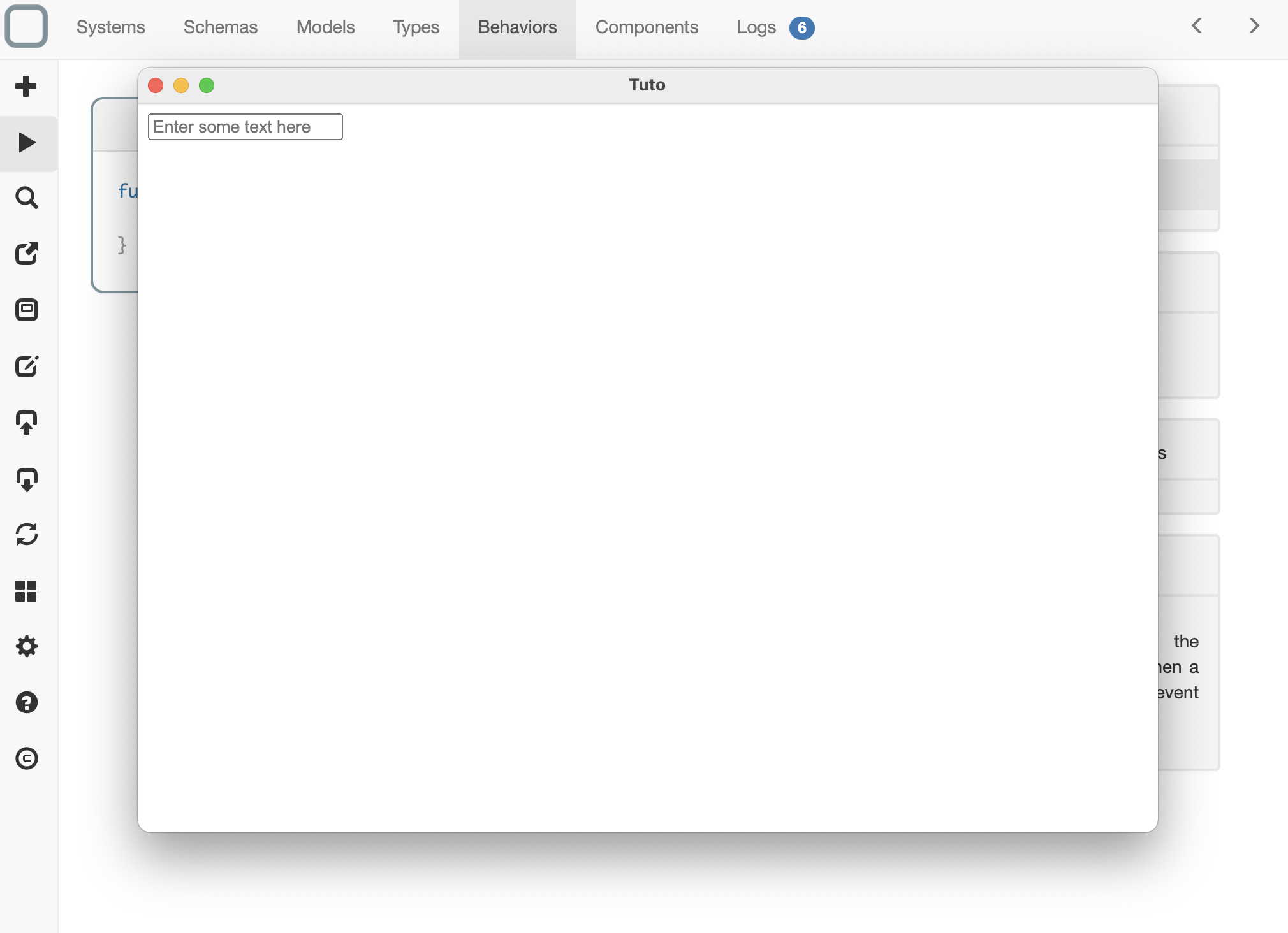
Install your bundle in another system
First, export your bundle by clicking on the export button. Choose JSON to export your bundle in a JSON file. Your bundle is ready then to be imported in another system.
Example:
<!DOCTYPE html>
<html>
<head>
<title>App</title>
<meta charset="UTF-8">
<meta name="viewport" content="width=device-width, initial-scale=1.0">
<!-- your bundle -->
<link rel="system" type="application/json" href="myhtml.json">
<!-- other systems -->
<link rel="system" type="application/json" href="system1.json">
<link rel="system" type="application/json" href="system2.json">
</head>
<body>
<script src="https://cdn.jsdelivr.net/npm/system-runtime/dist/system-runtime.min.js"></script>
</body>
</html>
More info?
See in this guide to have more details on how to install your bundle client-side.
